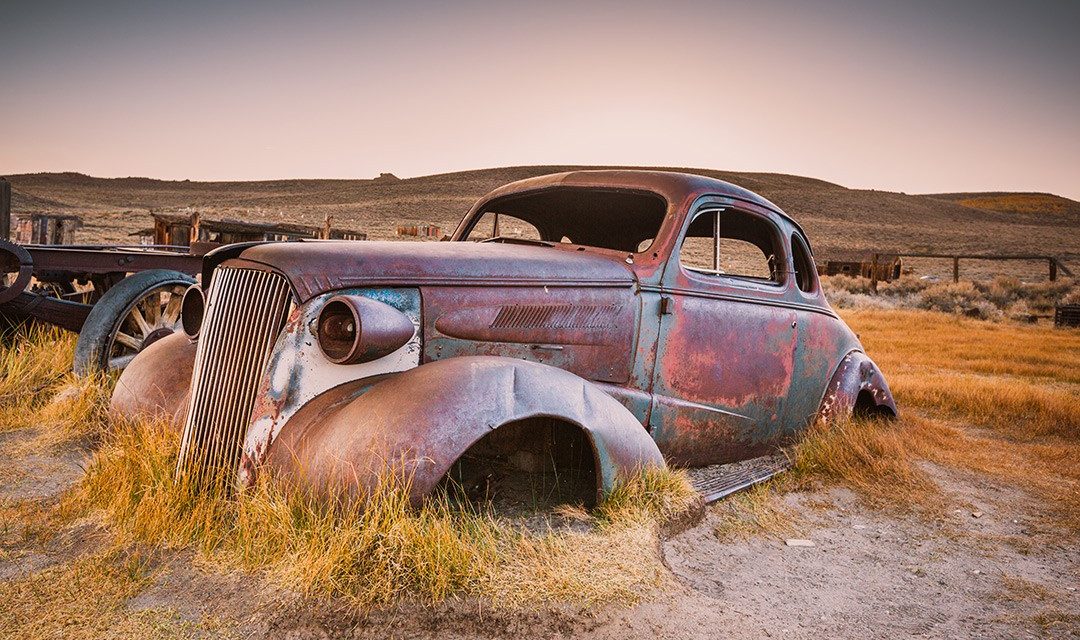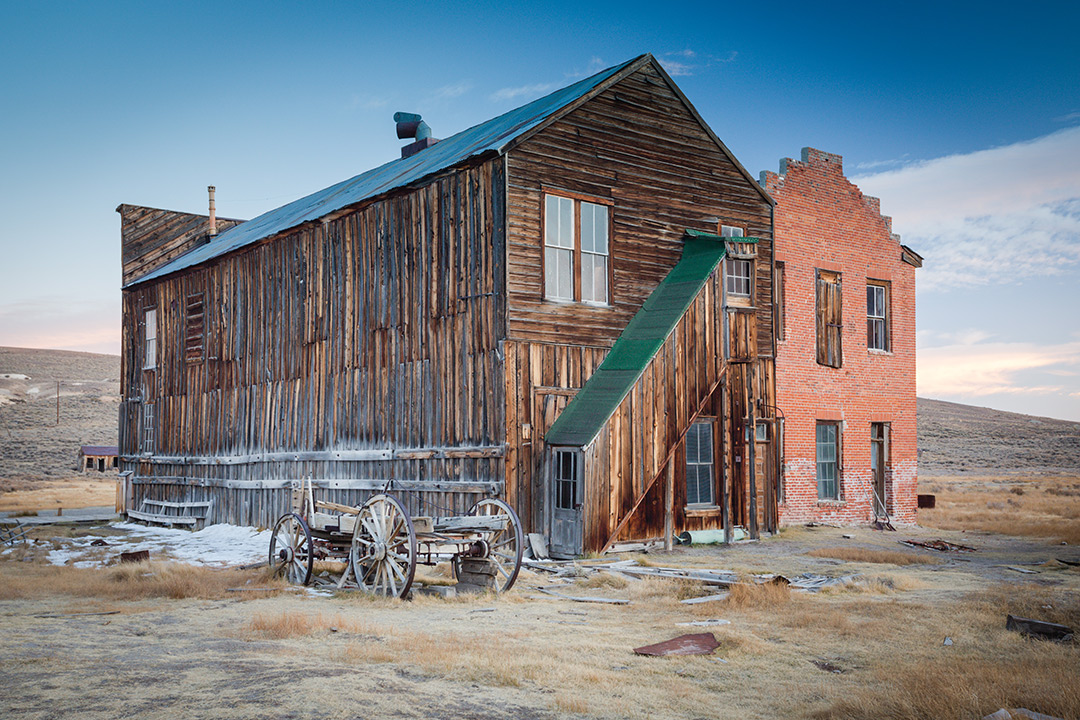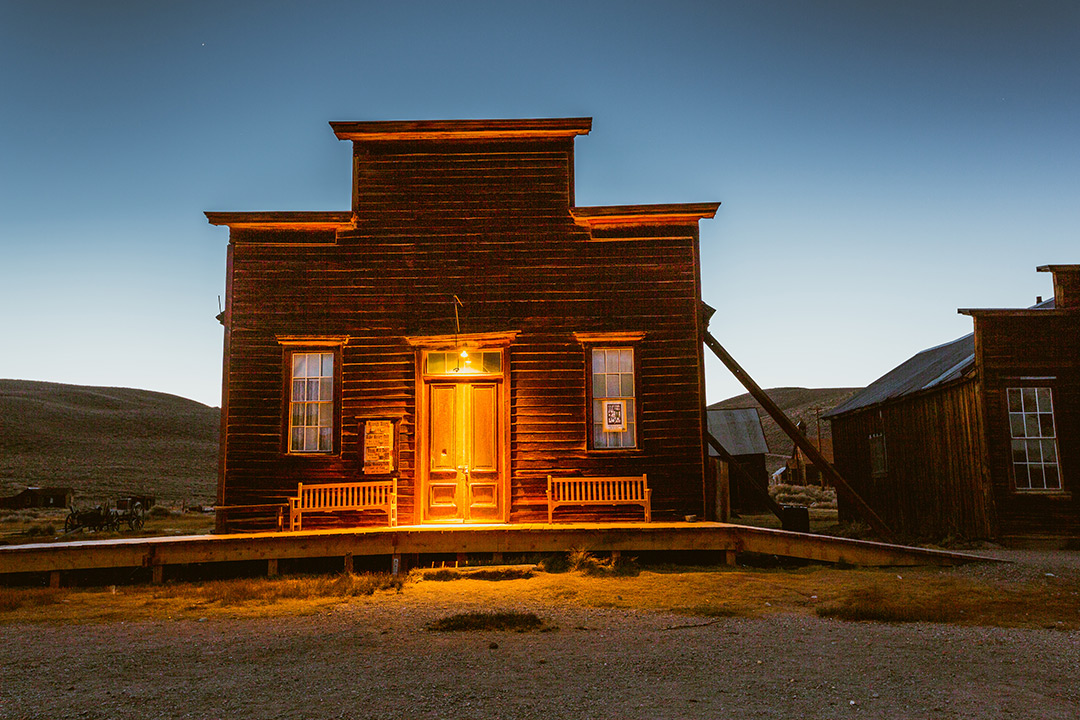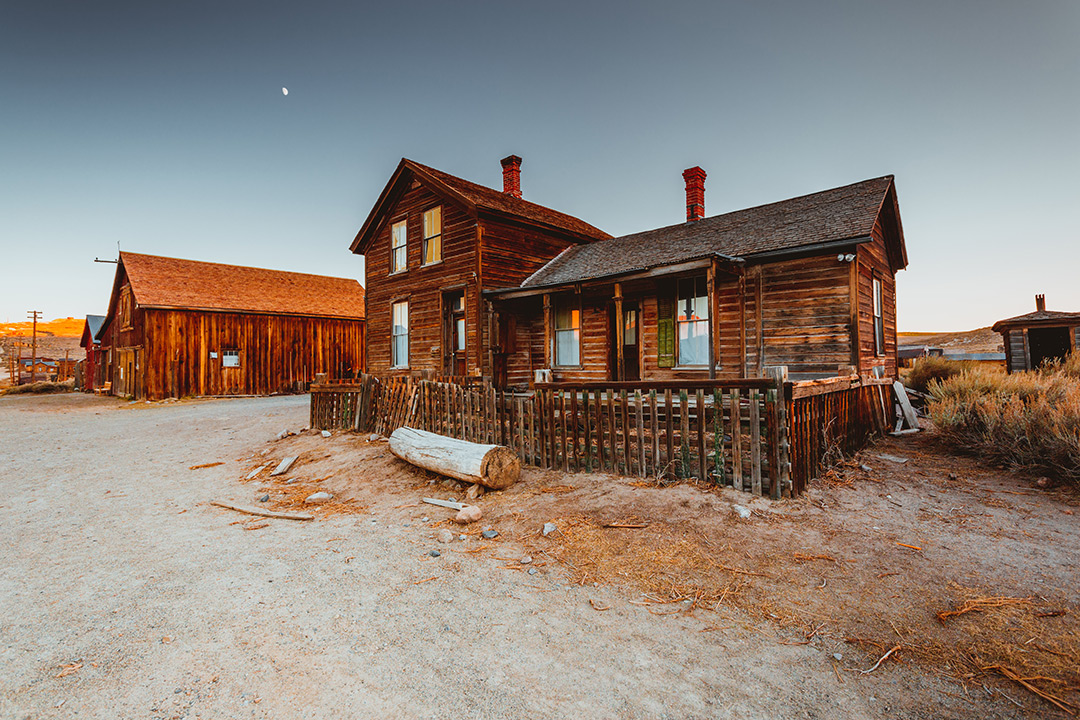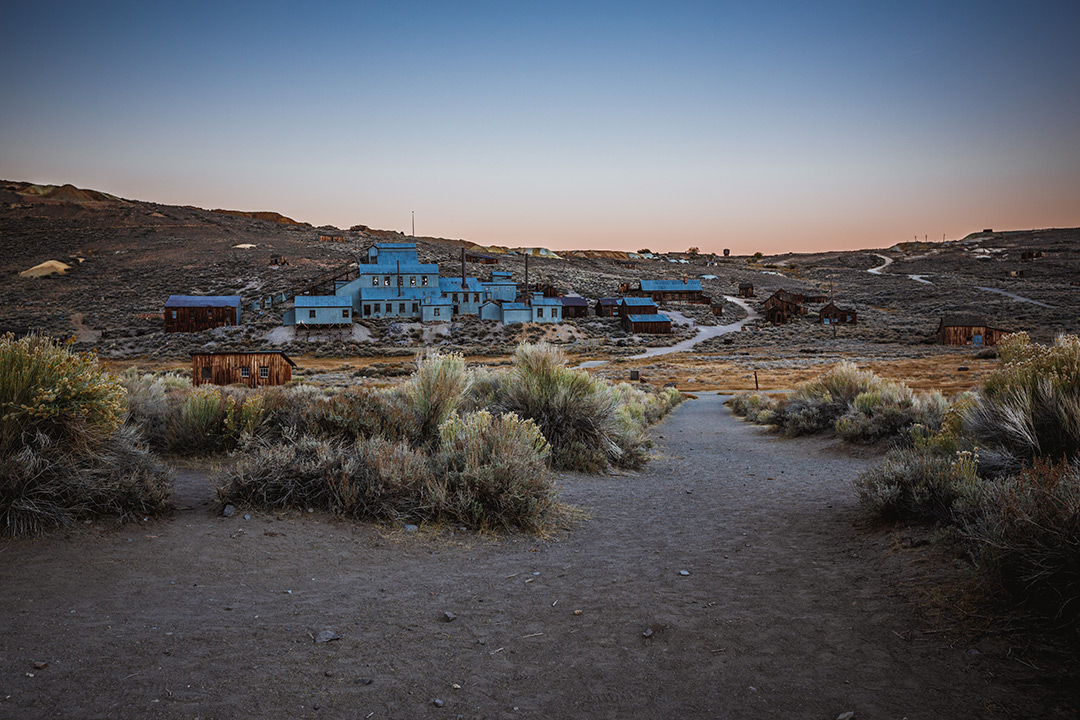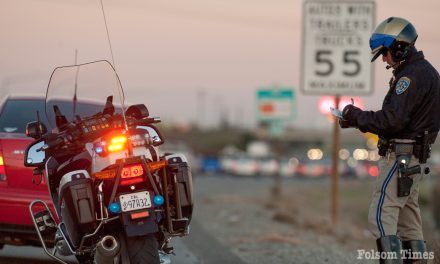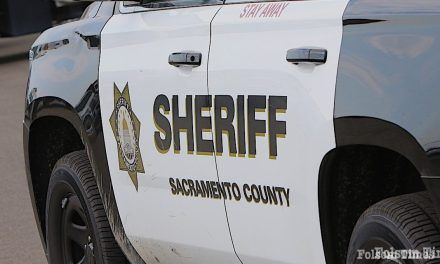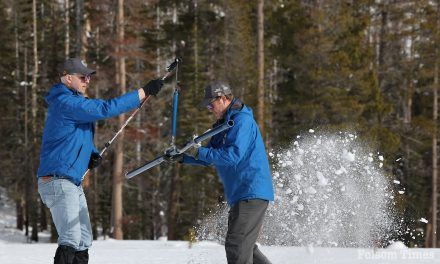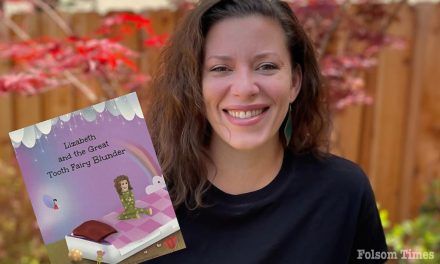There’s something eerily appropriate about bumping down the dusty desert road that winds the final few miles intoBodie State Historic Park, about an hour’s drive north ofMammoth Lakes.
Round the final bend in the careworn road, drive by the lonely graveyard on the southwest side of town, and look down upon the tattered remnants of a nearly forgotten ghost town. Back in the late 1800s, Bodie was a booming mining community with nearly 10,000 residents. Over time, the townsfolk began to fade away with the gold, and roughly a half-century ago, the final residents packed up and left Bodie, leaving the buildings alone and at the mercy of the dry desert winds.
Today, you can walk the dusty, silent streets of this fascinating historic site, with shops, hotels, and simple homes carefully preserved to look as they did when Bodie ceased to be. Look for period images on newspapers stuffed into the walls as makeshift insulation. Old trucks and gas pumps, a weathered wood church, and that lonely cemetery paint a picture of life—and death—in this remote corner of California’s high desert.
Be sure to bring food; there are no concessions in the park (though there is potable water). The self-guided walking tour is well worth doing. A bookstore is stocked with interesting information; a 28-minute video provides a good capsule history of the town and its role in the history of the area. Check theBodie Foundation’s calendar when making plans to see if your time there lines up with any special events, such asBodie Ghost Walks & Star Stories.
Bodie: a town frozen in time
Bodie, Californiais a town frozen in time, and preserved by California State Parks in a state of “arrested decay.” Bodie became a State Historic Park in 1962, and maintains the buildings just as they were found when the State took over the town – but they do not restore the buildings, instead choosing to simply preserve the buildings in their aged and weathered 1880s appearance.
In 1859 William (a.k.a. Waterman) S. Bodey discovered gold near what is now called Bodie Bluff. A mill was established in 1861 and the town began to grow. It started with about 20 miners and grew to an estimated 10,000 people by 1880! By then, the town of Bodie bustled with families, robbers, miners, store owners, gunfighters, prostitutes, and people from every country in the world. At one time there was reported to be 65 saloons in town. Among the saloons were numerous brothels and ‘houses of ill repute’, gambling halls and opium dens – an entertainment outlet for everyone.
On a daily basis miners would emerge from the mills and head for the bars and the red light district to spend their earnings. The mixture of money, gold and alcohol would sometimes prove fatal. Newspapers reported that townspeople would ask in the mornings “Have we a man for breakfast?” Meaning ‘Did anyone get killed last night?’
Some records show that a “Wm. Body” took a ship from New York, around the horn, to end up in San Francisco. It isn’t clear if that’s the same man who was prospecting near present day Bodie. In any case,the spelling of the namewas changed at some point before the majority of the people made their way to Bodie, and it stuck.
Today, even though Bodie is down a dusty, bumpy, slow, 13 mile long road off State Highway 395, it’s amazing how many people are aware of this once glorious town.
Today, even though Bodie is down a dusty, bumpy, slow, 13 mile long road off State Highway 395, it’s amazing how many people are aware of this once glorious town.
Getting there
Bodie is located in the Basin Range of the Eastern Sierra Nevada Mountains, about13 miles East of Highway 395in central California. The park address is Highway 270, Bridgeport CA 93517. Take U.S. Hwy. 395 to State Hwy. 270 and drive 10 miles east until the paved road ends, then continue for 3 miles of an unpaved dirt road.
Source and Imagery: California State Parks.
